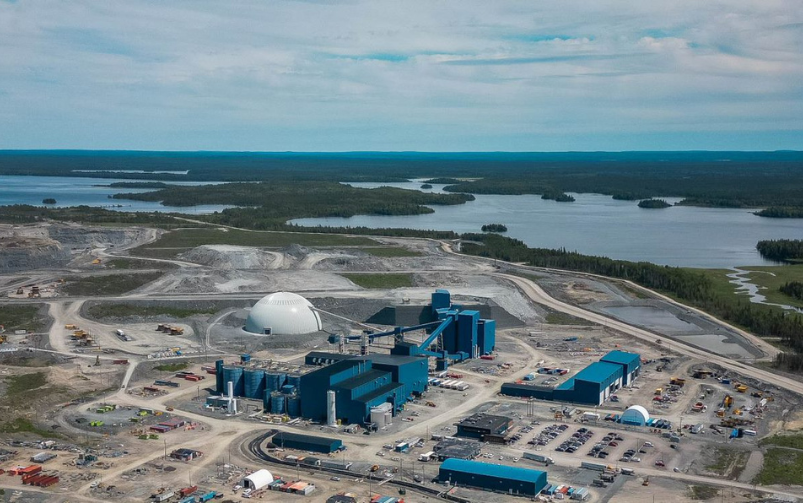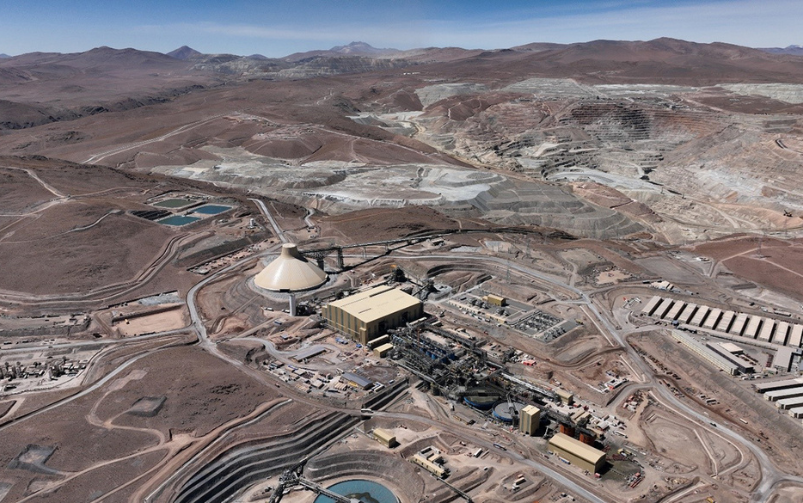The Valentine project in Newfoundland and Labrador encompasses five gold deposits—Leprechaun (pictured above), Sprite, Berry, Marathon and Victory—as well as a number of other early-stage gold prospects. Courtesy of Calibre Mining.
Welcome back to your weekly mining news recap, where we catch you up on some of the news you may have missed. This week’s headlines include an Alberta town voting in favour of a coal project, Newmont selling its Éléonore mine and a B.C. First Nation going to court over Seabridge Gold’s KSM project.
Calibre Mining has discovered more gold near its under-construction open-pit Valentine project in Newfoundland and Labrador, which bolsters its hope of starting a new gold district in the area, as reported by The Northern Miner. Project construction for Valentine is 85 per cent complete and it is on track for first gold pour in the second quarter of 2025.
Canada Nickel has filed an impact statement with the federal government for its Crawford nickel sulfide project near Timmins, Ontario, a key step that keeps it on schedule to secure permits and make a construction decision next year. Last month, the Canadian government announced conditionally approved funding for five projects in the Sudbury and Timmins regions of Ontario, with the Crawford project eligible for $6.8 million to progress a power transmission line and advance electrification studies, the latter of which it expects to complete next year.
Four of Barrick Gold’s senior employees from its Loulo-Gounkoto mining complex in Mali, who were already briefly detained in September, have been arrested, charged and are awaiting trial, as reported by The Associated Press. Mali’s military regime has been pressuring foreign mining companies to pay them more money. Barrick refuted the unspecified charges in a statement but said it would continue to engage with the Malian government to finalize a partnership agreement that would outline the government’s share of economic benefits produced by the complex.
Over 70 per cent of voters in historic mining town Crowsnest Pass, Alberta, have expressed support for the Grassy Mountain coal project, as reported by The Canadian Press. Australian company Northback has proposed to develop and rehabilitate a site that was last in operation 60 years ago. Although most of the community is in favour of bringing back metallurgical coal mining, the result of the vote is not binding and will not affect regulatory or legal challenges. The project, which was first rejected in 2021 by the federal government, is being considered by the province’s energy regulator and opponents are trying to block it in court.
Newmont is selling its Éléonore mine in northern Quebec to UK-based mining company Dhilmar for US$795 million as part of its ongoing plans to divest its “non-core” assets, as reported by Mining Weekly. This deal brings Newmont’s total divestment proceeds to US$3.6 billion. This news follows last week's sale of Newmont's Musselwhite mine to Orla Mining for US$850 million, which is expected to close in the first quarter of next year.
The Tsetsaut Skii km Lax Ha Nation is challenging B.C.'s approval of Seabridge Gold’s KSM project, located 65 kilometres northwest of Stewart, citing a lack of meaningful consultation about the tailings that the First Nation says would be stored within its territory, as reported by The Canadian Press. The Nation is pursuing a judicial review of B.C.’s decision to issue a "substantial start determination" for the project, which is part of the final stage of the environmental assessment process. The company stated that the First Nation declined invitations to participate in the review and that a final decision on the petition may take a year or longer, with the substantial start determination remaining in effect.
Similar concerns have emerged with Osisko Development’s Cariboo gold project in B.C., with the Xatśūll First Nation stating that it is "disappointed" that B.C.'s Mines Ministry granted an operating permit for the project without consulting its leadership or securing consent first, as reported by The Canadian Press. The First Nation claims it is considering legal action and is calling on the new mines minister to address inconsistencies in the application of the UN Declaration on the Rights of Indigenous Peoples “across government, including his ministry.”
Ontario is introducing a new Mining Act regulation to simplify the recovery of residual metals and minerals sourced from mine waste at active, closed or abandoned sites. This is the first regulation of its kind in Canada. Effective July 1, 2025, the regulation will help to streamline the permit process as a full closure plan or mining lease for public land projects will not be needed to reprocess mine waste.
Denison Mines is making progress on its Wheeler River uranium project in northern Saskatchewan. It has submitted the final environmental impact statement (EIS) for the project to the Canadian Nuclear Safety Commission, following the completion of the technical review phase of the federal environmental assessment approval process. It also submitted a final EIS to the Saskatchewan Ministry of Environment. The project aims to be Canada's first in-situ recovery uranium mine.
Panama’s new president has criticized the previous government’s mishandling of the crisis surrounding First Quantum Minerals’ Cobre Panama mine, which was shut down after the country’s Supreme Court ruled First Quantum’s contract with the government to be unconstitutional, as reported by The Northern Miner. He attributed the closure to discontent with the former administration. President Jose Raul Mulino’s government aims to resolve the situation next year, promising an audit of the mine. Operations at the mine have been suspended since last November.
Researchers at Brock University are exploring how to extract copper from an unlikely source: algae blooms in Lake Erie, as reported in the November issue of CIM Magazine. Inspired by phytoremediation, they are testing different chemical and physical methods to extract the metal from the algae. Though still in its early stages, the project could provide a unique and sustainable source of copper and potentially other metals, benefiting both the mining industry and environmental remediation efforts.
That’s all for this week. If you’ve got feedback, you can always reach us at editor@cim.org. If you’ve got something to add, why not join the conversation on our Facebook, Twitter, LinkedIn or Instagram pages?




